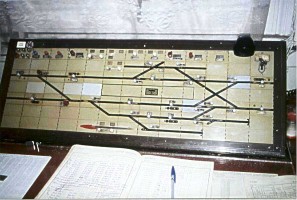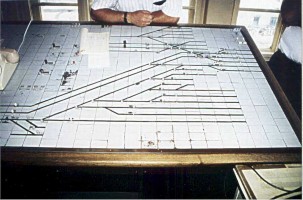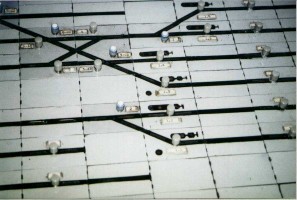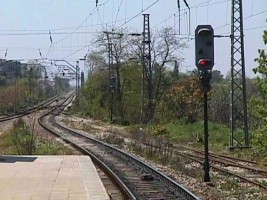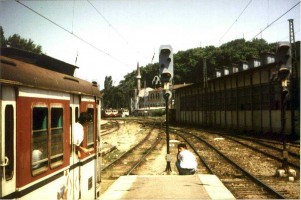DRS System
This text was prepared with the assistance of Micheal Urlaub
The DRS (" Drucktasten- Relaisstellwerk Siemens" / Pushbutton Relays Interlocking Siemens) system was installed by Siemens on the line Sirkeci to Halkalı when this line was electrified. DRS is the oldest automatic block signaling in Turkey and was in operation in the mid 1950's (1955?). DRS is a system derived from German signaling principles.
Note: German signaling is very well described in Wolfgang Meyenberg website (in English). See also his link page for the description of other relevant systems such as Austria or Hungary.
The DRS signal box
Type of signals and signal indications
There are basically three types of trackside signal:
- a main signal with four main lights: red / green / two yellows. This signal has also three secondary white lights mounted in a separate box. It is used as Entrance or Automatic Block Signals (see 4M below)
- a main signal with six main lights: red / green / two yellows / two whites. This signal has also three secondary white lights mounted in a separate box. It is used as Exit Signal (see 6M below).
- a protection signal with three lights: red / two whites (see 3S below). Provided at locations where no main signals are placed to authorize shunting movements (e. g. in non main running lines, depots or reversing loops).
Halkalı use to have a special distant signal on the station entrance west side. This signal was removed when the CTC was installed from Halkalı to Edirne.
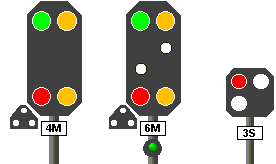
The trackside signal are completed by two platform signals:
- a brake test signals: three vertical white lights. The platform supervisor operates this signal. It indicates from top to bottom: apply / release / finished (see BRA below)
- a proceed indicator to relay to station staff that the station exit signal indicates a proceed aspect (see IND below)
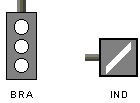
Stop aspects
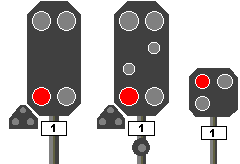 |
1) Immediate stop for train and shunting movements. The protected block section is occupied or no route is set from the signal. |
Proceed aspects
 |
2) Proceed at Normal speed. Proceed and expect to find the following signal at proceed or giving access to a diverging route (proceed at reduced speed). Two blocks beyond the signal are clear. The low timetable speeds on the appropriated line and the sighting conditions to the following signal ensure that the driver reduces speed if the following signal indicates two yellow lights (see 5) or a green and a yellow light (see 4). 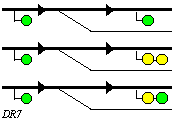 |
 |
3) Proceed but expect to find the following signal at stop. The block beyond the signal is clear. The block after the following signal is either occupied, either with no route set.  |
 |
4) Proceed at reduced speed over points set for a diverging route. Be prepared to proceed at following signal. A diverging route is set from the signal.  |
 |
5) Proceed at reduced speed over points set for a diverging route. Be prepared to stop at following signal. A diverging route is set from the signal.  |
 |
6) This aspect authorizes shunting and gives permission for shunting movements to pass the main signal at Stop. This signal remains at Stop until the train has come to a stand at it. After that the signaler must cancel the overlap of the entrance route manually to can clear the two white lights. The previous signal indicates: expect to stop; (one yellow) or, in case of a diverging route: reduce speed, expect to stop; (two yellow lights). |
 |
7) Proceed: "Passing authorized". This aspect authorizes shunting. |
Subsidiary aspect
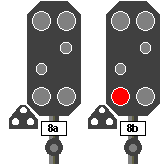 |
8) Authorization for trains to pass a defective (e. g. extinct) Main Signal (8a) or a Main Signal at Stop (8b). Line of sight driving: be prepared to stop short of any obstruction. |
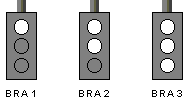 |
9) Test brake signal |

